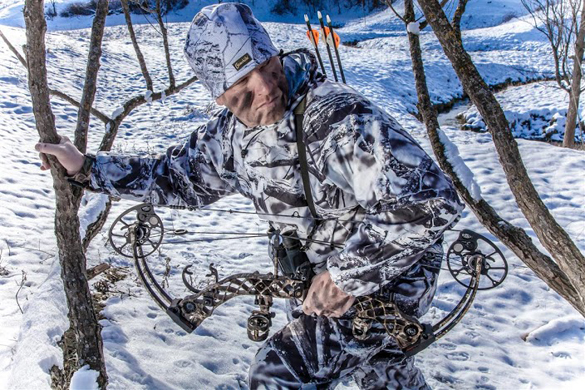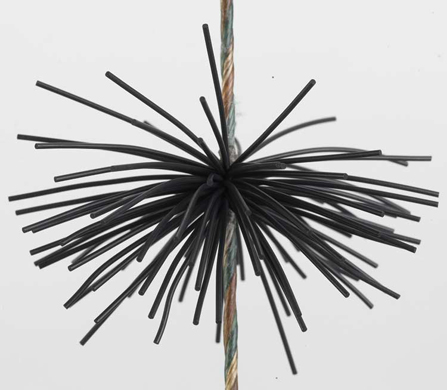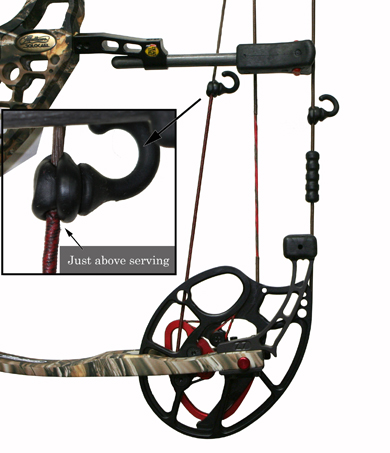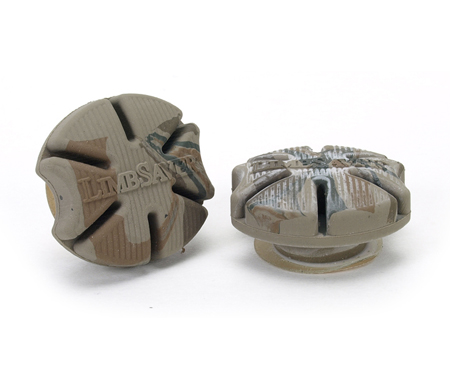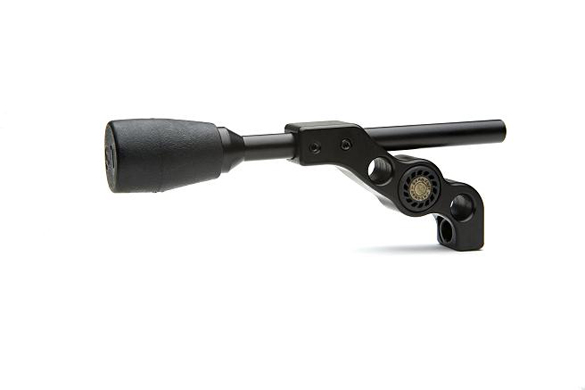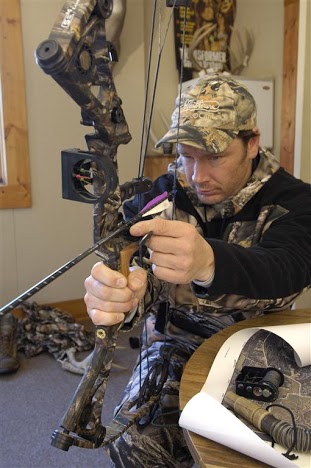LAST UPDATED: May 1st, 2015
Written by Bowhunting.com contributor Brandon Butler.
Silence is part of the essence of bowhunting. Each time we step into the field we enter a world where stealth, patience and precision are rewarded. Steps are calculated, time slows down and after sitting still long enough, we blend into the environment around us. Making noise just doesn’t seem right. It’s the reason people always whisper on television after shooting an animal. You know and they know that they could go ahead and speak loudly (or at normal levels) but doing so just doesn’t feel right.
The Mathews McPherson Chill is an extremely quiet speed bow that produces very little vibration.
Fast Is Not The Answer
For as long as I have been shooting a bow, which is pushing 25 years, the quest for quiet has raged. Thankfully, we’ve progressed from the early days of five pound stabilizers and big, puffy string silencers, but since perfection can never be achieved, attempts to push the needle ever closer remain constant. However, with bows today firing arrows faster than ever, the concern for quiet sometimes takes a back seat. Archers begin to think that somehow their arrow is faster than the reactions of a whitetail. This is a mistake. Even the fastest bows, those shooting over 300 ft/s, are nowhere near the speed of sound, which is 1,126 ft/s at sea level with a temperature of 68 degrees.
Benefits Of Quiet
So why is quiet important? Well, imagine you’re walking down a dark alley late at night. There are noises going on all around you―a horn honks, sirens are blaring, a door slams, a woman yells, a gust of wind rushes past. You’re filtering these sounds as you nervously make your way through a potential danger zone. You’re on edge and your senses are sharp, so if a sudden loud boom or crack were to take place within forty yards of you, chances are you’d jump.
Whether you’re in a treestand or on the ground, the importance of a quiet bow can’t be overstated.
Have you noticed how a deer’s ears go up when they are on alert; like when they raise their head up above the beans to survey their surroundings? They’re filtering sound to listen for danger while also looking for it. You don’t want to shoot at a deer when they’re in one of those moments. They’re too alert, even for a fast and quiet bow. You want to shoot when their head is down during a moment of relaxation. But, we don’t always get what we want and sometimes we have to shoot when a deer is on alert. In these do or die moments, a quiet bow is very important. In simplest terms, noise comes down to one thing…..vibration. The less vibration coming off your bow, the less noise each shot will produce. There are a number of accessories designed to dampen bow noise. Here’s a look at different products that will help make your bow quieter, thus giving you the edge you need to make a clean kill.
String Silencers
Most likely, the earliest form of a string silencer was animal fur, and it still works today. Tanned beaver hide is a favorite of traditionalists because it does make your bow quieter, is naturally water repellent and looks super cool. Chances are if you’re over the age of 20, you’ve had rubber whisker silencers on a bow at some point. I still do today.
Though considered “old-school” a lot of bowhunters still rely on the proven design of cat-whiskers placed on the bow string to dampen post-shot noise.
There are many benefits to these silencers. Rubber is tangle-free, lightweight, and waterproof. Rubber whiskers have stood the test of time because they actually reduce sound by limiting string vibration. Many newer forms of string silencers are now on the market. These include Bowjax, TruGlo, LimbSaver, Mathews Monkey Tails and many others.
Mathews’ Monkey Tails are a newer version of the old-school cat whiskers and do a great job of making any bow shoot more quietly.
Stabilizers
Hunters normally don’t need those two-foot long, behemoth stabilizers you see Olympians shooting in order to quiet and stabilize a bow. But I remember back in the day, some dudes were lugging those out to their treestand! It’s still funny to me now, sort of like mullets. Seriously though, stabilizers no longer look and feel like lead pipes from way back when. Today’s technology has brought the weight and size of stabilizers down to nothing, while increasing their ability to reduce vibrations, thus helping to eliminate noise more effeciently.
A good stabilizer not only balances the bow, it also soaks up vibration in the bow riser. Pictured here is the Pine Ridge Archery Nitro stabilizer.
Remember, when it comes to choosing a stabilizer try to test a few different models. Like most things though, you’re probably going to get what you pay for. Pine Ridge Archery, Trophy Ridge, New Archery Products and Octane are a few of the many archery accessory companies producing popular stabilizers.
Limb Dampners
Limb dampers reduce noise and vibration. Some argue how well they actually reduce noise, but few question their ability to reduce vibrations. And what we know about vibrations is that it causes noise. You do the math. LimbSavers and Bowjax really dominate the limb vibration market.
Most archers and bowhunters are familiar with the Limbsaver brand and their ability to quiet any bow rig.
Reports on forums are fairly evenly split on which works better. I guess it’s sort of like debating who makes the best bow. LimbSaver and Bowjax dampeners both reduce noise and vibration, are lightweight, affordable, easy to install, and in my opinion look cool.
String Stopper
A string stopper, well, stops your string. These vibration and noise reducing accessories are becoming more and more popular. In fact, they now come stock on a lot of bows. String stoppers reduce noise by transferring energy from the string to the bow. This occurs when the string slams into the bumper portion of the stopper. A string stopper also provides a soft landing for your string.
Nearly all bow companies are making bows that come standard with some sort of “string-stop” pre-installed. In addition, many after-market models exist to fit every style, need and budget. Pictured here is the Mathews Dead End String Stop.
Most string stoppers are simple to install, usually requiring no more effort than screwing one into the front or rear stabilizer hole. An added advantage of a string stopper is protection from dry firing. If your bow is accidentally dry fired, a string stopper can save you a lot of cash and heartache. Many manufactures offer their own brand of string stoppers.
Weight
In most cases, heavier is quieter. Shooting heavier arrows is one way to certainly reduce the sound of the bow shot. A heavier arrow requires more force to move so it eats up more vibration. The same goes for a heavier framed bow. The denser, heavier body of the bow absorbs vibration which minimizes sound. An added advantage to the heavier arrow is increased energy at impact. I shoot Grizzlystiks out of a #64 Robertson Stykbow, and even though it seems I could mix a drink in the time it takes an arrow to reach a 20 yard target, I love the silence of the setup and hollow-pumpkin sounding thump at impact.
General Maintenance
Moleskin is one product that has proved hard to improve upon. I covered the shelf and part of the riser on my first hunting bow with it and I’m still using it on my bow today. Moleskin serves as a buffer and protectant eliminating the chance of any “metal to metal” contact noise.
Mole skin is the perfect answer to a lot of noisy areas on a bow. Simply cover the problem area with this soft, fleece-like material and many of your metal-to-metal sound issues will be eliminated or greatly reduced.
One important bow accessory to look over is the quiver. Quivers can be loud. Make sure your quiver is tightly attached to the bow. A loose quiver will rattle. If there is any rattle in the cover, you can use moleskin or a stuffing material to fill gaps or cover contact points. Also, make sure all the screws are tight on your bow along with all the accessories. Loose screws allow parts to vibrate, casing noise and sharp sounds.
The importance of a quiet bow also increases with yardage. In other words, the closer the shot the less time an animal has to react to the shot; lessening their chance of reacting in time to get out of the way of your arrow. I’m not one of those fellas who feel confident loosing an arrow at an animal beyond 50 yards. And for me, 50 yards is pushing it. I’m not saying I’ve got anything against a guy shooting farther if he can do so ethically, I’m just saying that the closer the animal, the less chance of a string jump. Those of us shooting animals at closer distances don’t need to worry as much about bow noise as those picking animals off of the horizon. So finally, there’s an advantage to not being able to shoot worth a lick.
By combining the forces of all or some of these noise reducing accessories, your bow will surely shoot quieter, giving you an advantage when shooting at nervous animals and when taking longer shots.

